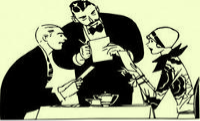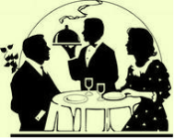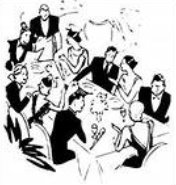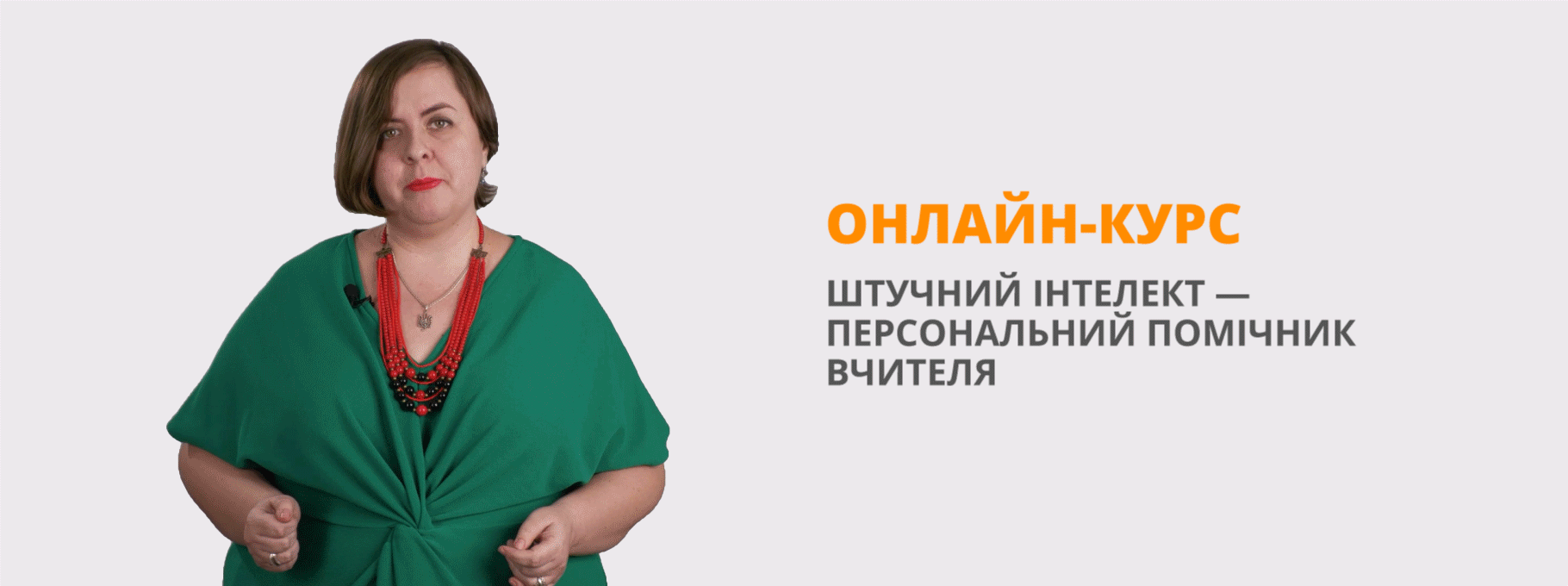Матеріали до уроків англійської мови "Професійна англійська мова. Форми звертання"
МІНІСТЕРСТВО ОСВІТИ І НАУКИ УКРАЇНИ
ДПТНЗ «ФАСТІВСЬКИЙ ЦЕНТР ПРОФЕСІЙНО_ТЕХНІЧНОЇ ОСВІТИ»
Професійна англійська МОВА
Форми звертання
Посібник для учнів з англійської мови
за професією «Кухар, офіціант»
Розробила викладач англійської мови
Центру професійно-технічної освіти
м. Фастова
Копиця Наталія Юріївна

Даний посібник містить матеріал різного типу і рівня складності, підібраний відповідно до програми з іноземної мови для учнів професійних навчальних закладів, які навчаються за професією кухар, офіціант.
У збірнику наведена професійна лексика, спрямована на розширення словникового запасу, та завдання, спрямовані на розвиток мовленнєвих навичок учнів у професійному спілкуванні.
ЗМІСТ
Урок 1 … Зустріч. Вітання
Урок 2 … Давайте познайомимось
Урок 3 … Запрошення гостей. Форми запрошення
Урок 4 … Типи питальних речень
Урок 5 … Згода. Відмова
Урок 6 … Подяка за обід. Прощання
Урок 7 … Узагальнення
Урок 8 … Контроль знань
LESSON № 1. Meeting. Greeting. ЗУСТРІЧ. ВІТАННЯ.
Exercise 1. Read and translate the text “What is a Waiter?” Notice what a waiter job includes.
What is a Waiter?
 A waiter is a person who works in either the catering or restaurant industry, and is invaluable to the food service process. Traditionally most waiters were male, but this has changed significantly, leading to the term waitress. Eventually many felt that differentiating waiter from waitress was sexist, and many have suggested less gender-centric terms for people in this profession, including server, or waitperson.
A waiter is a person who works in either the catering or restaurant industry, and is invaluable to the food service process. Traditionally most waiters were male, but this has changed significantly, leading to the term waitress. Eventually many felt that differentiating waiter from waitress was sexist, and many have suggested less gender-centric terms for people in this profession, including server, or waitperson.
A waiter’s job in a restaurant includes greeting people once they are seated at a table. If it is a particularly busy night, the waiter should still attempt to acknowledge people seated in the section of the restaurant he or she is responsible for and let them know that he’ll be back in a moment or two. The waiter then takes orders of guests, informs guests about specials, and answers questions regarding ingredients or preparation methods. If you are in this profession, it is very helpful to be aware of how the kitchen staff prepares meals.
catering – громадське харчування
restaurant industry – ресторанна індустрія
invaluable – безцінний
server – офіціант
waitperson – офіціант
to be seated – бути розсадженими
to attempt – намагатися
to acknowledge – висловлювати подяку
to be responsible for – нести відповідальність
to take orders – приймати замовлення
regarding – стосовно
to be aware of – бути обізнаним
Exercise 2. Agree or disagree with the following statements. Use the following phrases:
- I agree with you.
- You are quite right.
- It’s quite so.
- You are mistaken.
- I disagree with you.
- It is no so.
- A waiter is a person who works only in restaurant industry.
- Traditionally most waiters were mail in the past.
- But many have suggested less gender-centric terms, such as a server or a waitperson.
- A waiter’s job in a restaurant includes only greeting people.
- The waiter should attempt to acknowledge people seated in the section of the restaurant he or she is responsible for.
- The waiter answers questions regarding ingredients or preparation methods.
- It is not necessary to be aware of how the kitchen staff prepares meals.
Exercise 3. Make a conclusion on the text. Begin with:
- A waiter job includes …
- A waiter should be aware of …
VOCABULARY:
Hello! – Добрий день!
How do you do! - Добрий день!
Hi! – Привіт!
Good morning! – Добрий ранок!
Good afternoon! – Добрий день!
Good evening! – Добрий вечір!
Pardon… - Вибачте…
Excuse me… - Вибачте…
Young man… - Юначе… Молодий чоловік…
Young lady (miss)… - Дівчина … Панночка …
Sir - Пан
Mr / Mister… - Пан…
Madam - Пані
Mrs… - Пані…
Ms… - Пані…
Do you speak English? – Ви говорите англійською?
I can’t speak English. – Я не говорю англійською.
I speak a little English. – Я погано володію англійською.
A little. – Погано.
Could you speak a little slower? – Не могли б ви говорити повільніше?
Could you repeat, please? – Не могли б ви повторити, будь ласка?
I don’t understand you. – Я вас не розумію.
I need an interpreter. – Мені потрібен перекладач.
 Exercise 4: You are a waiter.
Exercise 4: You are a waiter.
Greet the guests of you restaurant
at first meeting.
LESSON № 2. Let’s get acquainted
VOCABULARY:
May I introduce myself. – Дозвольте відрекомендуватися.
Let me introduce you (to) – Дозвольте вас/ вам відрекомендувати…
I’d like you to meet… - Я хочу відрекомендувати вам…
What’s your name? – Яке Ваше ім’я?
What’s his/her name? – Як його/ її звати?
My (his/her) name is… - Мене (його/ її) звати…
Nice to meet you. – Приємно познайомитись.
Nice to meet you too! – Мені також!
How are you doing? – Як справи?
How are you? – Як поживаєте?
I’m great! – У мене все добре.
I’m fine / I’m OK. Thank you. – Все добре. Дякую.
Exercise 1: “Find the pairs”. Make up mini dialogues.

![]()
![]()

![]()


![]()


![]()
![]()




![]()
![]()



![]()
![]()
![]()
Exercise 2: Read and translate the dialogue.
A.: How do you do, Sir!
B.: How do you do!
A.: Do you speak English?
B.: A little.
A.: OK. Can I help you?
B.: Could you speak a little slower?
A.: Yes, please. Excuse me, Sir. Where are you from?
B.: I’m from Italy. My name is Marco.
A.: Nice to meet you, Marco.
B.: And what is your name?
A.: My name is Kate.
B.: Nice to meet you too, Kate!
Exercise 3: Act the dialogue in the exercise 2 changing the underlined words.
Exercise 4: Learn the dialogue in the exercise 2 by heart.
Exercise 5: Choose the necessary pronouns:
Do you know him/his. Him/He is my brother. He/His is the best waiter in this restaurant. Him/He likes his/him job very much.
Look at they/them. They/there are waiting for the waiter.
- Does he/him remember about them/their order?
- Of course. I have no doubt in him/his professionalism.
LESSON № 3. Inviting guests. Invitation forms
VOCABULARY:
I invite you to our restaurant. – Запрошую Вас до нашого ресторану.
Welcome! – Ласкаво прошу!
Won’t you come in? – Не хочете зайти всередину?
Nice to see you again. – Радий Вас бачити знову.
This way, please. – Сюди, будь ласка.
Let me show you your table. – Дозвольте я проведу вас до столу.
Come along, please. – Давайте пройдемо, будь ласка.
Please, make yourself comfortable. – Будь ласка, розташовуйтесь зручніше.
Take a seat, please. – Присядьте, будь ласка.
May I offer you…? – Чи можу я вам запропонувати ..?
Would you like to have dinner? – Ви будете обідати?
Exercise 1: Put the following expressions into the right order to make a dialogue:
|
|
Exercise 2: Give a reply to the following. Work in pairs
- How do you do?
- ……..
- Nice to meet you.
- ……..
- Do you speak English?
- ……...
- Ma I offer you a cup of tea?
- ……..
- Would you like to have lunch?
- ……..
- How are you doing?
- ……..
- Let me show you your table.
- ……..
LESSON № 4 Different types of questions
Exercise 1: Read and translate the following short conversations:
1. − What is your name?
− Nell.
2. − Can you take another place?
− Just now?
3. -- Today is a nice weather to have dinner under the open sky.
-- It is really very good idea to have dinner under the open sky.

4. -- That steak is not tasty .
-- Why do you think so?
5. -- We have no strawberries today.
-- Why? / I am not going to order strawberries.
6. -- Would you like meat or fish for the main course?
-- Offer me something not fat, please. I am on diet.
Exercise 2: Put the words into the right order to make questions:
- you/ a cup/ do/ coffee/ want/ of?
- help/ can/ us/ you?
- lunch/ can/ we/ where/ have?
- change/ I/ cauliflower /may/ red cabbage /for?
- we/ have/ can/ when/ lunch?
- speak/ can/ to the / I/ head-waiter ?
- I/ you/ can/ help?
- like/ have/ you/ to/ would/ dinner?
Exercise 3: Fill in the missing words:
1 . … did they have a dinner party ?
2. … invited them to a dinner party ?
3. … you like a cup of coffee?
4. … they bring money for the cake yesterday ?
5. … you ready to order ,madam ?
6. …did they order for dessert ?
Exercise 4: Name the types of questions in the exercise 3
Exercise 5: Ask questions to the following sentences
- He is aware of all the secrets of this profession.
- She knows him very well.
- A waiter can answers questions regarding ingredients.
- He took the order ten minutes ago.
- Waiters work in either catering or restaurant industry.
LESSON № 5. REFUSING AND CONSENT
Exercise 1: Read and translate the following dialogue.

- Please, come in.
- Thank you.
- Please, sit down. Would you like a cup of tea?
- Yes, please.
- How about a biscuit?
- No, thanks. I’m on a diet.
Exercise 2: Read “Everyday sentences”, translate them.
Everyday Sentences
|
|
|
|
Exercise 3: Make up short dialogues using the tables of the exercise 1.
Exercise 4: Read and translate short conversations.
Short Conversations
- “Have some more cake?”
“With pleasure. It’s very nice.”
- “Have another cup of coffee.”
“Yes, with pleasure. I like your coffee very much.”
- “Have some more fish.”
“No, thank you. It’s very nice, but I can’t eat any more.”
- “May I give you some more meat?”
“Yes, please. It’s very good.”
- “This soup is very good. May I have a little more.”
“Yes, let me help to some more.”
- “May I have some more cake?”
“Of course. Help yourself.”
- “Pass me the salt, please.”
“Yes, here you are.”
“Thank you.”
“Don’t mention it.”
Exercise 4: Act the dialogues from the exercise 3 trying to change words and word combinations.
Exercise 5: Learn “Everyday sentences” by heart.
LESSON № 6. after the meal
Exercise 1. Read and translate the text “After the Meal”.
After the Meal

If you want to say “Thank you” after the meal, you may also use the following:
- That was very nice.
- That was really lovely.
- That was lovely. I really enjoyed it.
It is very important at the end of the party, that you do NOT just stand up and announce that you are leaving. If you do that, your British host will think there is something wrong – perhaps she/he has upset you. British people usually say at least twice that they are going to leave. There are usually at least ten minutes – or longer – between the two. You can say any of the following:
- Goodness, is that the time!
- I really will have to go now.
- I really must go.
- I’ll have to be going.
- I must be going.
Usually you use two different expressions – one the first time, one the second time. The ones with –ing are usually used first and the ones without –ing when you really are to go.
Exercise 2. Answer the questions on the text “After the Meal”.
- What can you say if you want to say thank you to somebody?
- Can you just stand up and announce that you are leaving?
- What will your British host think in such way?
- How many times do the British say about their leaving?
- What can you say in such situation?
- Is it good to use only one expression both times?
- What will you do?
LESSON № 7. summarizing
Exercise 1: Give replies to the following phrases:
- How are you doing?
- What’s your name?
- Would you like to have diner?
- Nice to see you.
- Come along, please.
- May I offer you another cup of coffee?
- Have some more cake.
- Let me give you some more salad.
Exercise 2: Act the following dialogues changing the underlined words:
- – May I offer you some tea (coffee, water, juice)?
-- Yes, please. (No, thank you. It’s enough for today.)
- – Would you like anything else?
-- Yes, pass me some salad (fish, meat, cake).
- – Would you like to have dinner (breakfast, lunch, supper)?
-- No, we’ll have only tea (coffee, desert, ice-cream).
Exercise 3: Translate the following Ukrainian sentences into English:
Waiter: Доброго дня.
Customer: Good afternoon.
Waiter: Ласкаво прошу! Чи можу я допомогти ?
Customer: Yes, please. Can you show us a free table?
Waiter: Із задоволенням. Сюди будь ласка.
Customer: Oh, it’s right near the window!
 Waiter: Розташовуйтесь зручніше.
Waiter: Розташовуйтесь зручніше.
Customer: Thank you!
Waiter: Чи можу я вам щось запропонувати?
Customer: Two cups of tea, please.
Waiter: Щось ще?
Customer: Well, I think fruit salad .
Waiter: Зачекайте п’ять хвилин?
Customer: OK. Thank you.
LESSON № 8. knowledge control
Writing: Ask as many questions to the following sentences as you can
- A waiter is a person who works in either the catering or restaurant industry.
- A waiter’s job in a restaurant includes greeting people.
- A waiter can answer questions regarding ingredients or preparation methods.
Speaking: Make up dialogues “At the restaurant”. Work in pairs: one of you is a waiter, another – a customer.


про публікацію авторської розробки
Додати розробку
